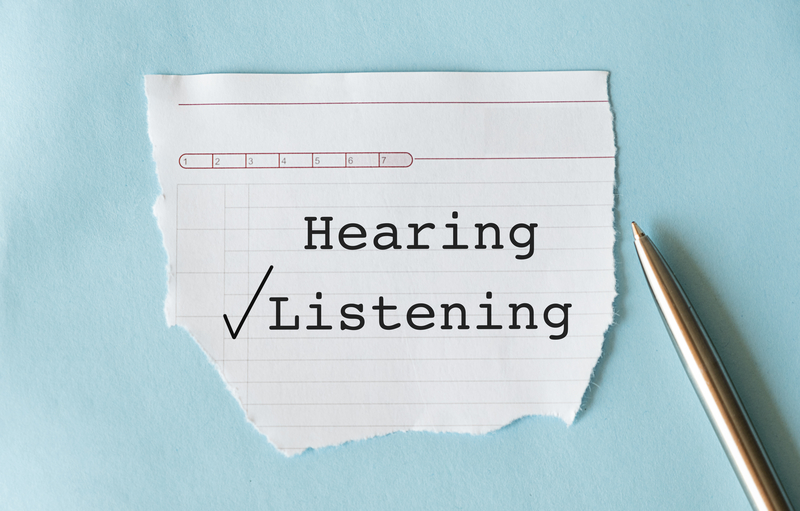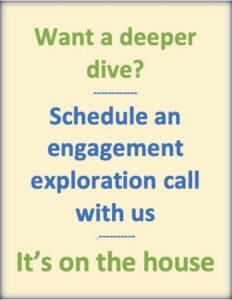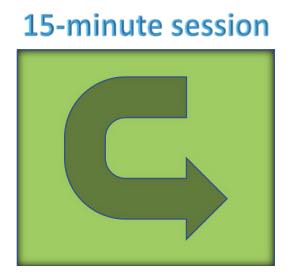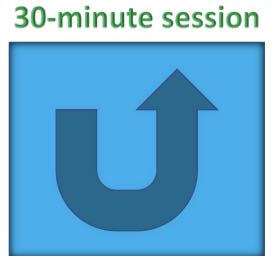The Human View™ Blog

Education? Meh. Motivation? De Rigueur!
Beyond understanding
Of course employees need to understand their benefits. But more importantly, they need to use them.
Still, moving from "I get it" to "Wow! I want that!" isn't a simple, short distance between two points. It's a nuanced, challenging, and (at least, up till now) enormously frustrating journey.
One size fits all
For pretty much all of my 44-year sojourn into the arid realm of benefits, this has been the sole approach to benefits communication.
In this model, it's education - plus hopium. Hope that people will "hear" something and maybe understand it, "get" that they can benefit, and "heed" (act on) the messages; it has been the cornerstone of "benefits communication."
Being a uniform approach, it simply delivers the same message to all recipients, with no demographic, behavioral or psychographic segmentation.

It's based on what someone should do, focusing on the logical aspects, and making sense to the audience.
Generational Model: Old school
Neuro-Activation Focus: Thinking brain
Confidence Level: 20% - 40%
Motivational Alignment: Low to moderate
Engagement Impact: Low to moderate
Behavioral / predictive propensity
This model evolves beyond one-size-fits-all by using data mining algorithms for segment development. It combines demographics, consumer data, and historical behavior.
In this model, the focus shifts to predictive analytics, trying to foresee what someone is likely to do. While the messaging remains direct, it begins to incorporate behavioral science insights, recognizing the influence of past behaviors on future actions.
Generational Model: 2nd – 3rd Generation
Neuro-Activation Focus: Thinking brain
Confidence Level: 40% - 50%
Motivational Alignment: Moderate
Impact: Moderate

Values-based™ benefitpersonas™
The most advanced of the three, this model uses research surveys and data mining for segment development. It adopts a values-based approach, targeting why someone should act, appealing to both the survival and the feeling aspects of the brain. This model resonates on a deeper, safety / emotional level, encouraging decision-making that makes sense - and feels right.
Generational Model: 5th Generation New School
Neuro-Activation Focus: Survival & feeling brain
Confidence Level: 60% - 70%
Motivational Alignment: High
Impact: High
The consumer segmentation tide reaches the benefits shore
For decades, consumer segmentation has been pivotal in retail and online commerce, but it's relatively new in benefits and healthcare. Initially, it was based on demographics, recognizing the differing needs of various age and gender groups. More recently, however, marketing experts have observed that employee decisions (like regular consumers') are more driven by an employee's values and beliefs than by benefit plan features. As such, demographics alone are insufficient to reveal these crucial traits.

Today's "market-leading" firms have, indeed, moved beyond simple demographics, to leveraging AI and predictive analytics to develop behavioral propensity models.
However, the game-changer in engagement strategy is to adopt Values-Based™ and Neuro-Optimized™ approaches. This shift acknowledges that past behaviors are indicative of future preferences, but goes deeper by aligning guidance with an individual's core values and worldviews.
Most of us form our core values by our late teens or early 20s. These values are often subconscious, but nonetheless are continuously influencing our behavior. Understanding someone's values propensity enables more effective engagement, as it taps into the natural processing of the human brain. This approach leads to more compelling outreach campaigns, since...
...people tend to behave in ways that reflect their core values, ensuring a sense of safety and alignment.
The last word
The evolution from the one-size-fits-all model to the Values-Based™ / Neuro-Optimized™ / benefitpersonas™ model signifies a profound shift in messaging and communications strategies for benefits and healthcare.
The traditional approach, grounded in logic and uniformity, has given way to more nuanced strategies that consider behavioral patterns and predictive analytics. However, the most significant advancement is in understanding and aligning with individual values and neuro-psychological factors.
This contemporary approach not only improves the relevance and quality of product and service recommendations, but also enhances engagement and response rates.
As such, Values-Based Communications™, underpinned by Neuro-Optimized™ messaging that is distinct to our benefitpersonas™ model, emerges as the most powerful strategy available today to evolve outreach and communication to actually marketing benefits and healthcare programs - the bottom line of which is more enrollment, more participation, more engagement - and better results.
~ Mark Head
© 2023. All Rights Reserved.
Aspirations
"If you don't play at your edge, you'll never expand your territory."
“If we can’t come from a place of honest truth, then we’ll never get to a place of authentic connection.”
~ Mark Head
Click the green button or the blue button (below) to visit our scheduling pages.

Mark Head
President
With 4 decades of combined experience in employee benefits consulting, wellness and health management, Head brings a unique combination of dynamic perspectives into a clear vision of where the future of health care is moving - and it's moving towards deeper human connection, awareness, and engagement...
Follow Us On
© 2025 Benefit Personas, LLC. All Rights Reserved.





